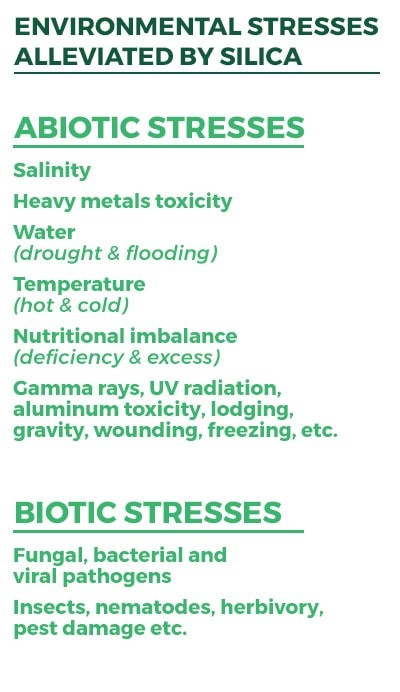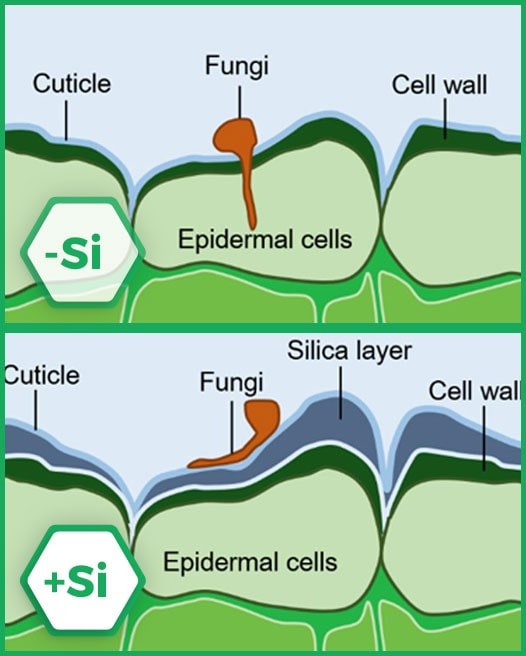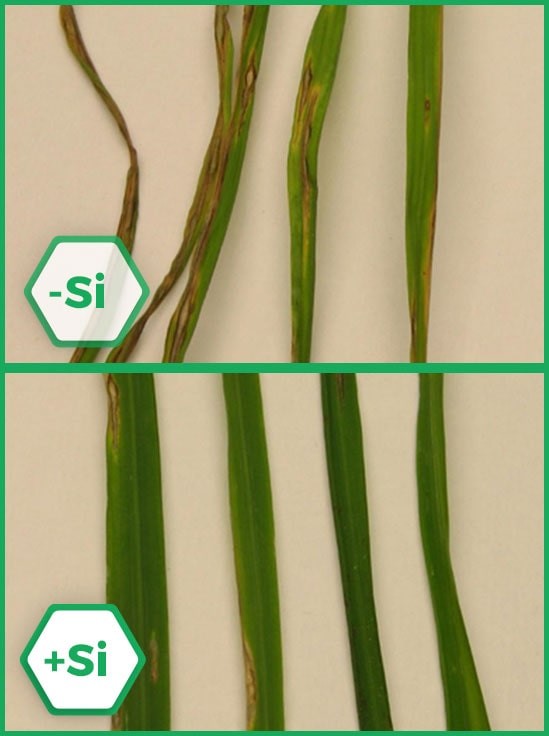The Role of Silica in Field Crops
It has been over a decade since the discovery of how plants take up and re-translocate silica (Si), one of the most abundant elements on earth. Further focus on the element has revealed that it plays an important role in alleviating the effects of biotic and abiotic stress; however, still much remains to be understood.

Silica and Abiotic Stress
Abiotic stressors, such as salinity, drought, excess moisture, wide fluctuations of temperature, and heavy metal stress, trigger crops to generate reactive oxygen species (ROS). These reactive molecules can cause severe damage to cell structures, altering the normal functioning of the cells.
The use of silica has been shown to reduce the damaging effect of these ROS. For instance, supplementation of plants grown under heavy metal stress – cadmium (Cd) or aluminum (Al) – has been shown to increase the activity of enzymatic and non-enzymatic antioxidant systems, such as the ones involved in the AsA-GSH and glyoxalate pathways.
Grasses are known to accumulate high-levels of silica, which helps improve their tolerance to stress. Much of that effect is linked to the stimulation of their stomatal conductance and transpiration under stress conditions, leading to a higher expression of the genes regulating silica transporters and aquaporins (water channels).
Silica and Biotic Stress

The benefits of silica in improving tolerance to biotic stresses, such as pathogens and insects, are well-described – more so than for abiotic stress. It is believed that the silica-derived biotic resistance is a result of a mechanical barrier formed by silica deposition along the cell walls, slowing the progress of intruders.
Figure 2 shows how the silica layer formed in the cell wall of silica-treated plants enhances the plant’s resistance to fungi infection by providing a physical barrier.

Silica can also indirectly affect pathogens and herbivores by inducing plant defenses responses, such as the shikimate, glucosinolate and jasmonate pathways. For instance, strawberries can accumulate silica as high as 3% of their dry weight, hence reducing the severity of powdery mildew and preserving yield. Silica has also been reported to reduce the incidence of blast in rice.
Figure 3 shows leaf blast symptoms in rice after inoculation with Magnaporthe grisea for 10 days. During that time, the plants were treated with silicon (+Si) or without silicon (-Si). (Sun et al., 2010)
Talk to OMEX
If you have questions about how silica fits into a comprehensive nutrient management plan, contact your OMEX representative today.
Your rep can answer your questions and provide you with a customized, guided strategy that incorporates OMEX’s wide range of seed-applied Primers, in-furrow Starters, in-crop Foliars and other specialty products, including SW7, SW8 and StimPro Armour, to cover the needs of your crops during ideal and less than ideal conditions.
